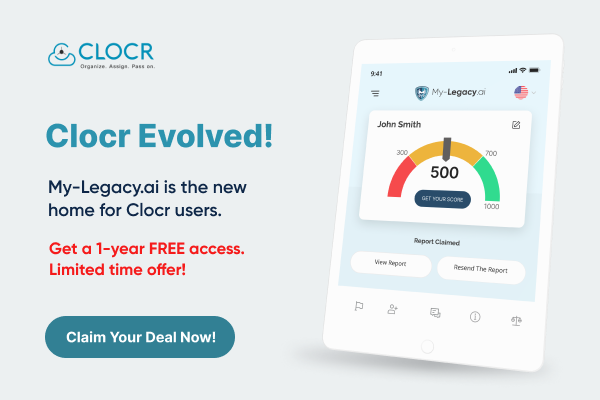Digital Assets play significant roles in our lives, which is why we consider them an extension of our identities. Hence, it is essential to pass your Digital Assets such as photos, videos, social media accounts, professional achievements, etc. in the form of Digital Legacy via a Digital Estate Plan.
Planning your Digital Legacy will secure your Digital Information and give peace to your loved ones after your death. They can revisit your Digital Legacy and relive your memories whenever they want. So, here are six simple steps which will help you in creating your Digital Legacy Plan.
6 steps to create a Digital Legacy Plan
Listing
First and foremost, you need to analyze the scope of Digital Legacy Planning. This might be the precarious part. Most of us have a diverse range of online accounts and some of which we’ve forgotten about.
So, we recommend going through your computer, looking at the bookmarks, browsing history, and checking applications that are downloaded on your computer and smartphones.
After recalling and going through everything, you can start making a list of all the Digital Assets you want to include in your Digital Legacy.
Decide What Happens To Your Account In Your Absence
Decide whether you want to close your online accounts, cancel subscriptions (Amazon, Netflix, etc.), or memorialize them.
However, if you decide to cancel or close accounts make sure you have someone to consolidate your photos into other storage services before your account is canceled.
Analyze Digital Legacy Policies
Before you lay out your Digital Legacy, you need to go over the Digital Legacy policies of various sites. For instance, Apple Legacy allows users to assign a contact who can access their files after they are gone. Similarly, Facebook allows family members to memorialize the account of their loved ones after their demise.
However, Amazon’s consumer service will not allow you to pass on any content including your e-books and music. Thus, researching these policies will help you create instructions on how you want your accounts to be handled.
Choose Your Digital Executor
A Digital Executor is the person who makes sure your digital legacy is taken care of, as per your wishes. You can either appoint your Estate Plan’s executor as your Digital Executor for your Digital Estates or choose a tech-savvy individual who knows their way through social media and other online accounts.
The role of a Digital Executor comes with great responsibilities. Thus, be certain it is someone you trust.
You can also choose a specific individual as a Digital Executor for certain online accounts. For example, if you are a millennial and do not want your family members to handle your social media accounts, you can appoint your close friend as a Digital Executor – exclusively for your Social Media sites.
Legalize Your Digital Legacy
It’s important to legitimize your Digital Legacy by making it legal and secure. Some people even include it in their existing Will. However, Will becomes public knowledge after you pass away, which can be an issue for security reasons. You do not want your passwords to go public along with the Will, do you?
The other problem with including your Digital Legacy in your Will is you will have to keep updating it after every password change. Thus, it’s best to create a Digital Estate Plan. It can keep up with password changes without making your information public.
Store and Share Memories with Your Loved Ones
There are so many essential aspects of creating a Digital Legacy Plan but storing and sharing them with your loved ones tops the list.
Clocr’s Time Capsule is an easy solution to store and share your Digital Legacy. Apart from storing photos and videos, you can also include personalized messages for your loved ones. It is absolutely customizable – use it to store photos, videos, favorite recipes to be passed down to the next generation, or recorded audio/video messages for your special someone.
Creating Digital Legacy might be overwhelming but it will make sure your Digital Assets are secure – even after your passing.

